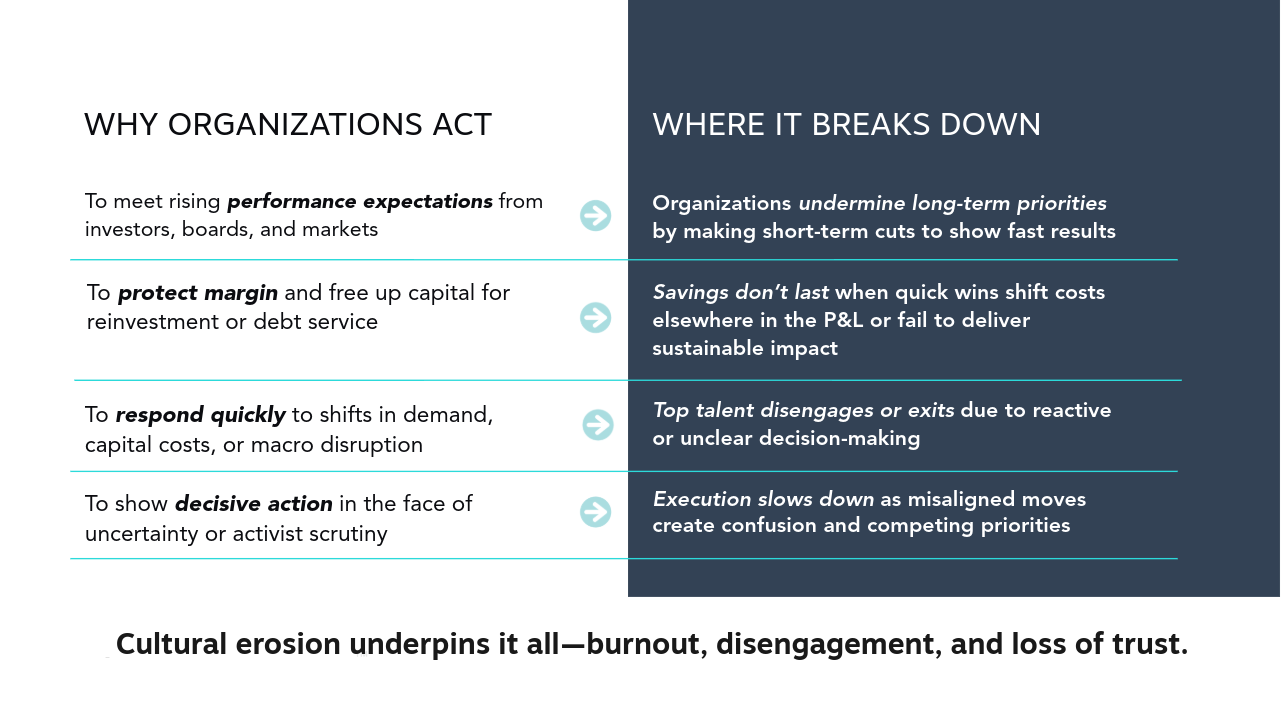Cost Advantage
Why even the best-laid cost transformation plans can, and do, fail
Tom Monahan discusses how companies need to effectively – and durably – manage their costs, as it's likely to increase substantially over the coming years for a variety of reasons beyond their control.
In today’s environment, margin pressure is a constant—but how leaders respond shouldn’t be. Amidst uncertain global supply chains, increased labor costs, and rising complexity, the most capable executives don’t treat cost as a constraint. They use it as a catalyst—to clarify priorities, accelerate decisions and progress, and unlock truly sustainable growth. Real advantage comes when managing cost structure becomes a leadership discipline—not a reactive exercise. If you're still relying on yesterday’s cost playbook, you’re already behind.
Heidrick & Struggles brings what others don’t: leadership alignment. Where traditional organizations chase short-term cost targets, we help define what to protect, what to reshape, where to invest, and how to lead differently—so cost becomes a continuous source of clarity, control, and momentum. We do that by working with you to identify and proactively embed the shared leadership behaviors, decision processes, and cultural dynamics that drive sustainable cost advantage and, ultimately, business transformation.
Cutting without a growth strategy is just shrinking
Turning cost into a catalyst starts with asking the right questions
We hear these questions all the time—but they’re rarely just about cost. They reflect how well your organization is aligned to lead through change.
How can we reduce cost without eroding our ability to grow?
|
|
|
|
|
Why it matters: Short-term wins at the expense of future value are no longer acceptable to boards or markets |
Is our structure enabling speed—or slowing us down?
|
|
|
|
|
Why it matters: Agility is now a core performance metric—not just headcount efficiency |
Are finance and business leadership aligned on trade-offs?
|
|
|
|
|
Why it matters: Without shared ownership, execution stalls and misaligned decisions create friction |
How will this affect our culture and talent pipeline?
|
|
|
|
|
Why it matters: Even well-intended savings can trigger disengagement, attrition, and long-term talent risk |









